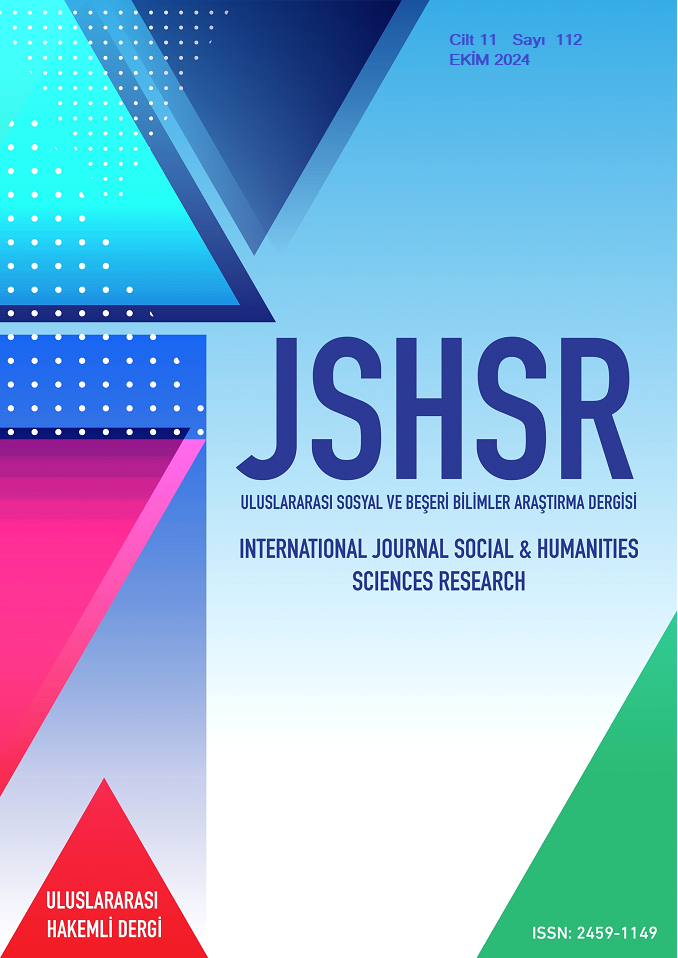Verbal And Musical Multi-Dimensional Content Analysis Of Turkish Arabesque Music (Example Of Orhan Gencebay)
DOI:
https://doi.org/10.5281/zenodo.13960119Keywords:
Communication, Arabesk Music, Content Analysis, Orhan GencebayAbstract
This study aims to reveal the impact of Turkish arabesque music on society by conducting a multidimensional content analysis of the works of Orhan Gencebay, one of the genre's most significant representatives. Within this scope, the title tracks from 25 of Gencebay’s albums were analyzed. Throughout the second half of the 20th century, Gencebay left a lasting impression on Turkish music, resonating with a wide audience both musically and socially. His songs revolve around themes such as love, sadness, separation, and social issues. Through his music, Gencebay sheds light on the emotional struggles, identity quests, and cultural adaptation challenges faced by rural migrants during Turkey’s urbanization process, using his art as a platform that mirrors societal issues. In this sense, he has evolved from merely a musician to a cultural figure who captures the emotional needs and social transformations of the people. This study also aims to explore the depth of thematic elements in Turkish arabesque music, analyzing how these elements are reflected in society.
The study also examines the intricate connections between lyrics and music in Orhan Gencebay's works. Gencebay frequently employs the Kurdi, Nihavent, and Hijaz maqams in his songs, which imbue his compositions with emotional depth. These maqams enhance the thematic content of the songs, offering listeners a profound emotional experience. Additionally, the study analyzes the instrumental arrangements and rhythmic structures in Gencebay's music, revealing that these elements are harmoniously aligned with the lyrical meaning, thereby creating a deeply impactful experience for the audience. Gencebay's songs vividly portray social issues, emotional traumas, and the quest for individual identity, using an expressive and evocative language. His art is regarded as a guide for individuals in their search for identity and as a means of observing social changes over time. Within this framework, Gencebay's works are evaluated not only as musical innovations but also as socio-cultural phenomena, serving as a valuable resource for understanding the effects of societal dynamics through his music. His songs thus stand as an archive of Turkey’s transformation process, playing a crucial role in understanding the influence of arabesque music on society.
References
Baykal, G. (2012). Bir iletişim aracı olarak müzik. http://www.gokalpbaykal.com/makale/bir-iletisim-araci-olarak-muzik/
Berelson, B. (1952). Content analysis in communications research. Free Press.
Birekul, M. (2015). Popüler kültür ve müzikte anlamın kaybı. Akademik İncelemeler Dergisi, 10(1), 155-180.
Bulut, M. H. (2008). Neşet Ertaş’ın türkülerinin çok boyutlu içerik çözümlemesi. Folklor/Edebiyat Dergisi, 14(54), 45-58. Ürün Yayınları.
Bulut, M. H., & Gündüz, M. (2005). Aşık Veysel’in türkülerinin çok boyutlu içerik çözümlemesi. Folklor/Edebiyat Dergisi, 14(44), 30-42. Ürün Yayınları.
Coşkun, A. H. (2001). Ne olur sev beni. Birey Yayınları / İskele-Sancak Kitapları Dizisi.
Gökçe, O. (1990). İçerik çözümlemesinin sosyal bilimlerdeki yeri ve önemi. Hacettepe Üniversitesi Edebiyat Fakültesi Dergisi, 10(2), 135-146.
Güllülü, S. (1994). Sanat ve toplum. Atatürk Üniversitesi Fen Edebiyat Fakültesi Yayınları.
Güven, U. Z., Kaya, Y., & Perrin, A. J. (2020). Music, city, and social change: A study of musical preferences in a former suburb of Istanbul. Journal of Economy Culture and Society, 61, 107-123.
Güngör, N. (1990). Arabesk: Sosyokültürel açıdan arabesk müzik. Bilgi Yayınevi.
Güngör, N. (1993). Arabesk, sosyo-kültürel açıdan arabesk müzik. Bilgi Yayınları.
Kuzucanlı, G., & Çelikiz, E. (2019). Türk sinemasında arabesk müzik ve sahne dönemi: “Batan Güneş” filmi örneği. Ulakbilge, 37(7), 399-406.
Özbey, M. (2013). Popüler kültür ve Orhan Gencebay arabeski. İletişim Yayınları.
Şener, S., & Oğul, B. (2022). Re-evaluating the roots of Arabesk music: Grup Metronom. Musicologist.
Stokes, M. (1992). The Arabesk debate: Music and musicians in modern Turkey. Clarendon Press.
Stokes, M. (2010). The republic of love: Cultural intimacy in Turkish popular music. University of Chicago Press.
Uymaz, E. (2024). Arabesk melodileri: Türkiye müzik sahnesinde bir evrimin izleri. TÜRKAV Kamu Yönetimi Enstitüsü Sosyal Bilimler Dergisi, 4(1), 231-252.
Downloads
Published
How to Cite
Issue
Section
License
Copyright (c) 2024 INTERNATIONAL JOURNAL OF SOCIAL HUMANITIES SCIENCES RESEARCH

This work is licensed under a Creative Commons Attribution 4.0 International License.


